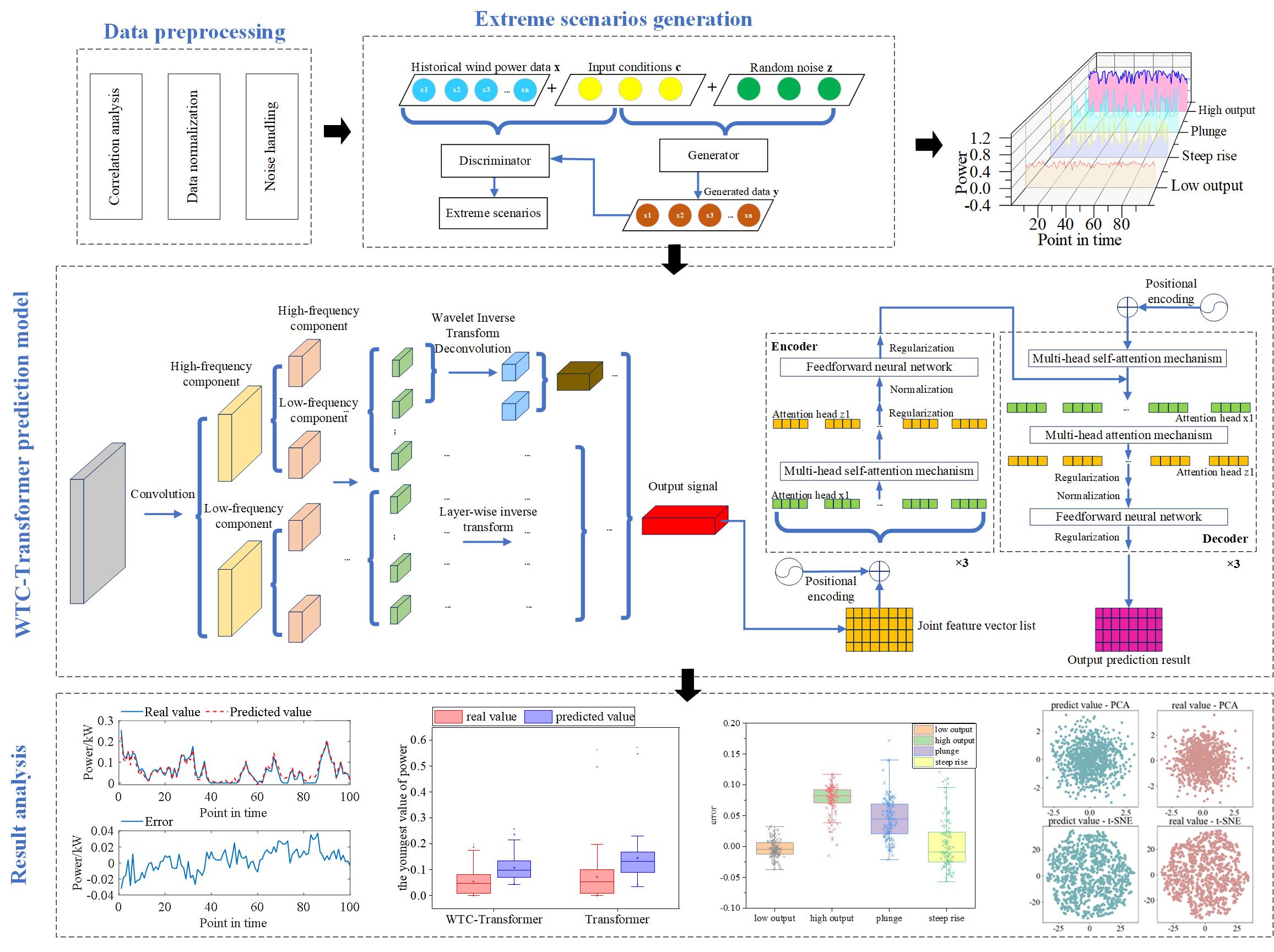Wavelet Transform Convolution and Transformer-Based Learning Approach for Wind Power Prediction in Extreme Scenarios
Jifeng Liang1, Qiang Wang2, Leibao Wang1, Ziwei Zhang3, Yonghui Sun3,*, Hongzhu Tao4, Xiaofei Li5
1 Electric Power Research Institute, State Grid Hebei Electric Power Co., Ltd., Shijiazhuang, 050021, China
2 State Grid Hebei Electric Power Co., Ltd., Shijiazhuang, 050021, China
3 College of Artificial Intelligence and Automation, Hohai University, Nanjing, 210098, China
4 China National Power Dispatching and Control Center, State Grid Corporation of China, Beijing, 100031, China
5 China Electric Power Research Institute Co., Ltd., Beijing, 210037, China
* Corresponding Author: Yonghui Sun. Email: 
(This article belongs to the Special Issue: Advances in Deep Learning for Time Series Forecasting: Research and Applications)
Computer Modeling in Engineering & Sciences https://doi.org/10.32604/cmes.2025.062315
Received 16 December 2024; Accepted 03 March 2025; Published online 19 March 2025
Abstract
Wind power generation is subjected to complex and variable meteorological conditions, resulting in intermittent and volatile power generation. Accurate wind power prediction plays a crucial role in enabling the power grid dispatching departments to rationally plan power transmission and energy storage operations. This enhances the efficiency of wind power integration into the grid. It allows grid operators to anticipate and mitigate the impact of wind power fluctuations, significantly improving the resilience of wind farms and the overall power grid. Furthermore, it assists wind farm operators in optimizing the management of power generation facilities and reducing maintenance costs. Despite these benefits, accurate wind power prediction especially in extreme scenarios remains a significant challenge. To address this issue, a novel wind power prediction model based on learning approach is proposed by integrating wavelet transform and Transformer. First, a conditional generative adversarial network (CGAN) generates dynamic extreme scenarios guided by physical constraints and expert rules to ensure realism and capture critical features of wind power fluctuations under extreme conditions. Next, the wavelet transform convolutional layer is applied to enhance sensitivity to frequency domain characteristics, enabling effective feature extraction from extreme scenarios for a deeper understanding of input data. The model then leverages the Transformer’s self-attention mechanism to capture global dependencies between features, strengthening its sequence modelling capabilities. Case analyses verify the model’s superior performance in extreme scenario prediction by effectively capturing local fluctuation features while maintaining a grasp of global trends. Compared to other models, it achieves R-squared (R
2) as high as 0.95, and the mean absolute error (MAE) and root mean square error (RMSE) are also significantly lower than those of other models, proving its high accuracy and effectiveness in managing complex wind power generation conditions.
Graphical Abstract
Keywords
Extreme scenarios; conditional generative adversarial network; wavelet transform; Transformer; wind power prediction
 Open Access
Open Access
